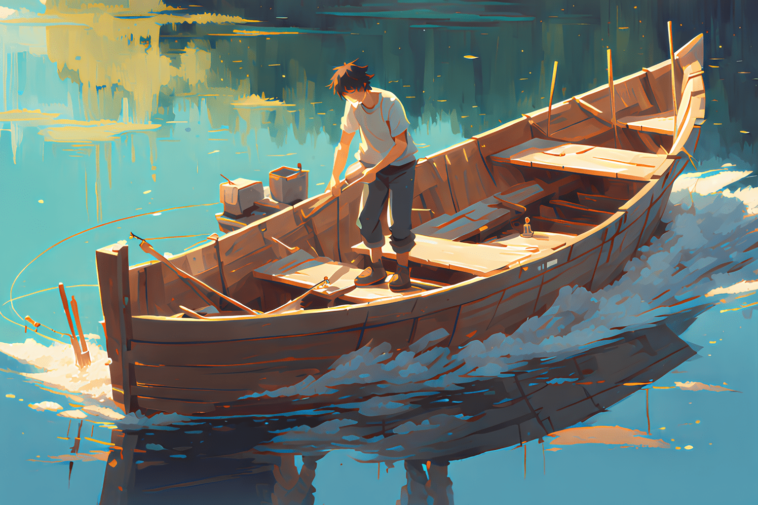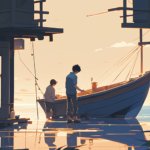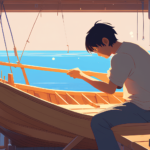Are you ready to turn your weekend hobby into an adventure on the water? Building a drift boat at home is more than a project. It’s a journey of skill, patience, and pride.
Building a DIY drift boat needs more than just technical skills. It requires passion, dedication, and a desire to learn. Whether you love fly fishing or woodworking, making a wooden boat is very rewarding.
Wooden boat building is not easy. It takes about 120 hours of work, careful planning, and a focus on quality. With the right tools, materials, and guidance, you can make a drift boat that shows your unique style and skill.
Key Takeaways – How To Build a Drift Boat
- DIY drift boat projects typically take 6-12 months to complete
- Expect to invest around $1,200 in materials and supplies
- Basic carpentry skills are essential for successful boat construction
- Proper workspace and tools are key for a successful build
- Patience and attention to detail are your most important assets
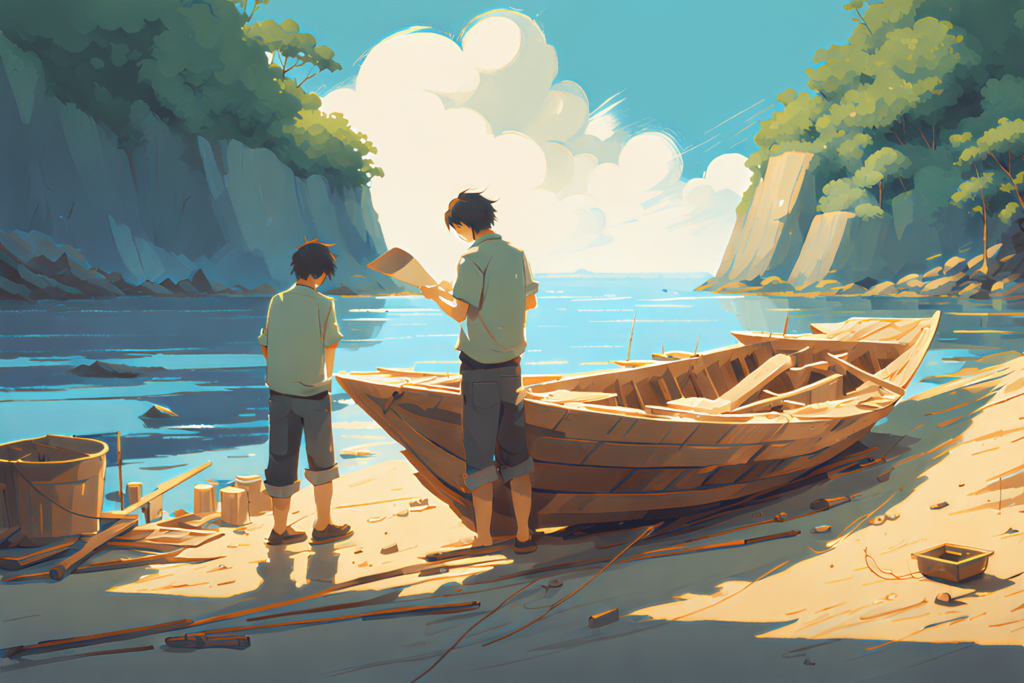
Understanding Drift Boats
Drift boats are a special kind of boat with a long history in river travel and fishing. They have changed a lot over the years. Now, they are key for anglers and river lovers who need to move easily in water.
Drift Boat History
The history of drift boats starts in the Pacific Northwest’s rivers. Skilled craftsmen made these boats for tough river travel. They were vital for moving and fishing in hard-to-reach places.
Types of Drift Boats
Today, there are many kinds of drift boats:
- Wooden drift boats – Traditional and classic design
- Fiberglass drift boats – Lightweight and durable
- Aluminum drift boats – Robust and low maintenance
- Plastic drift boats – Emerging lightweight option
Advantages of Custom Drift Boat Construction
Building your own drift boat has many benefits. You can design it exactly how you want. This means you can choose the materials and features that fit your river trips best.
“A custom drift boat is more than a watercraft; it’s a personal expression of craftsmanship and river passion.”
| Boat Type | Primary Material | Best Used For |
|---|---|---|
| Classic Wooden | Marine-grade Plywood | Gentle Rivers |
| Modern Fiberglass | Composite Materials | Technical Waters |
| Aluminum | Marine Aluminum | Rugged Environments |
Whether you’re an experienced angler or love exploring rivers, knowing about drift boats can change your experience. Making a custom drift boat is a mix of skill, creativity, and love for rivers.
Essential Tools and Materials
Building a drift boat needs careful planning and the right tools. Whether you’re skilled in woodworking or love DIY projects, knowing what materials and tools you need is key. This knowledge is vital for your project’s success.
Creating a drift boat at home requires precision and the right tools. Choosing the right materials can make your boat look professional or like a DIY project.
Essential Tools for Construction
- Drill with multiple bits
- Belt sander for smooth finishing
- Compound miter saw for precise cuts
- Jigsaw for cutting out shapes
- Circular saw for long straight cuts
- Assorted clamps for holding materials in place
- Hand tools like hammers and measuring tape
Critical Materials for Drift Boat Building
| Material | Recommended Type | Quantity Needed |
|---|---|---|
| Plywood | Marine-grade | 2-3 sheets (4′ x 8′) |
| Epoxy Resin | Boat-grade | 1-2 gallons |
| Fiberglass Cloth | 6 oz. weight | 2-3 rolls |
| Fasteners | Stainless steel | Assorted sizes |
Strategic Material Sourcing
Finding quality materials for your drift boat takes research. Look at local marine stores, online retailers, and boat forums. Pro tip: Compare prices and read reviews before buying materials.
“The right tools and materials are the foundation of a successful drift boat build.” – Experienced Boat Builder
Plan to spend about $900 on materials. Buy from specialized suppliers like Specmar in Scapoose. Also, get detailed plans from experienced builders for the best results.
Designing Your Drift Boat
Building the perfect drift boat needs careful thought about design, size, and personal touches. A well-made drift boat turns into an angler’s dream come true.
Basic Design Principles
Drift boat design focuses on the boat’s main purpose. Expert builders pay attention to key elements:
- Hull shape for the best river performance
- Rocker for easy maneuvering
- Weight for stability
Choosing the Right Dimensions
Choosing the right size for your drift boat is key. Most DIY builders go for lengths between 13 and 16 feet. Beam widths range from 48 to 58 inches.
| Boat Length | Recommended Beam Width | Typical Use |
|---|---|---|
| 13-14 feet | 48 inches | Small rivers, solo fishing |
| 15-16 feet | 52-58 inches | Larger rivers, multiple anglers |
Incorporating Personal Features
Adding custom features can make your drift boat stand out. Think about including:
- Built-in cooler compartments
- Special storage
- Custom seats
“A drift boat is more than transportation—it’s an extension of the angler’s personality.” – River Craft Magazine
When designing your drift boat, remember the importance of materials. Okoume mahogany plywood and white oak are great for a light, strong boat that excels on the water.
Unlock the secrets to building your dream boat with MyBoatPlans! With detailed plans for over 518 boats and expert video tutorials, you’ll have everything you need to create your perfect vessel. Click here to begin your journey!
Preparing Your Workspace
Creating the right boat building workspace is key for a successful drift boat build. Good planning and setup make the process smoother, safer, and more fun.
Selecting the Right Location
Your safety starts with the right workspace. Look for:
- Heated garage with temperature control
- Spacious workshop with good ventilation
- Outdoor covered area protected from elements
Setting Up Your Work Area
A well-organized workspace needs careful planning. Make sure to include:
- Enough lighting for detailed work
- Multiple electrical outlets
- Dedicated storage for tools and materials
Safety Considerations
Boat construction safety is top priority. Key safety steps are:
| Safety Equipment | Purpose |
|---|---|
| Respirator | Protect from resin and fiberglass dust |
| Safety Glasses | Shield eyes during cutting and sanding |
| Ventilation System | Remove harmful chemical fumes |
“A well-prepared workspace is the foundation of successful boat building” – Professional Boat Builder
Remember, temperature control is vital when working with epoxy resins. Keep your workspace above 60°F for best curing and material performance.
Building the Hull
Building a drift boat hull needs precision, patience, and careful planning. The hull is the heart of your boat, affecting its performance, stability, and use.
Building a strong hull involves several important steps. These steps require careful attention to detail:
- Select high-quality marine-grade materials
- Prepare a stable work surface
- Ensure precise measurements
- Use appropriate bonding techniques
Step-by-Step Hull Construction
The hull building starts with a solid frame. Builders often use the stitch and glue method. This method temporarily holds plywood pieces together with zip ties before bonding them permanently.
“Precision in hull construction determines your boat’s ultimate performance on the water.”
Tips for Ensuring Stability
Stability is key in drift boat building. Important tips include:
- Maintaining symmetrical design
- Distributing weight evenly
- Using 6 oz. fiberglass cloth for reinforcement
Common Hull Building Mistakes to Avoid
| Mistake | Consequence | Prevention |
|---|---|---|
| Rushing construction | Structural weaknesses | Take time, follow precise steps |
| Neglecting epoxy layers | Poor waterproofing | Sand between epoxy applications |
| Ignoring side curvature | Improper hull shape | Carefully measure and cut materials |
Building a good hull needs patience, skill, and careful detail. By following these tips, you’ll make a drift boat that works well and lasts long.
Adding a Bottom and Sides
Making a drift boat needs careful work on the bottom and sides. The right materials and methods are key for a strong, watertight boat.
For the bottom, marine-grade materials are essential. Plascore Board is a top pick for its durability and fit for boat building.
- Thickness: 3/4″ Plascore Board
- Standard sheet dimensions: 48″ x 96″
- Cost: Approximately $110 per sheet
Material Choices for Bottom and Sides
Choosing the right materials is key for durability. For the bottom, consider these factors:
- Width requirements: Typical drift boat bottom width is 57″
- Bottom length variations:
- Square transom: Approximately 14′
- Curved transom: Around 14′ 8″
Techniques for Securing the Materials
Proper attachment is vital for strength. Some effective methods include:
- Using epoxy peanut butter to fill key joints (approximately 3 ounces)
- Installing small 1″ x 1″ blocks along side panel edges
- Utilizing 16-gauge bailing wire for initial stitching
Ensuring Watertight Boat Sealing
“Precision in sealing can make the difference between a reliable boat and a disaster.”
Sealing the boat needs careful attention. Expect the sealing process to take time – it might take longer than you think.
Pro tip: Invest in quality materials from the start. Better materials save you from future problems.
Download over 500 Boat Plans. Click on the link below.
-->Click Here<--
Building a drift boat is more than a project. It’s a journey of personal growth and skill.
Installing the Transom and Seats
Building the perfect drift boat needs focus on the transom and seat setup. These parts are key for the boat’s performance, stability, and comfort on the water.
Choosing the Right Transom
The transom is the heart of your drift boat’s strength. Experts say to use at least 3 pieces of 3mm Okoume Plywood for a strong, rounded transom. Important things to think about include:
- Creating a 3″ long scarf joint for strength
- Using Finn-ply forms that are 1/8″ thick
- Designing the transom to match the hull’s interior profile
Boat Seat Installation Techniques
Installing seats right is key for balance and comfort. Here are some tips for seat placement:
- Install a primary rower’s seat in the best spot
- Add fore and aft passenger seats for balanced weight
- Use deck screws (2 1/2″ and 1 1/4″) for secure attachment
“A well-designed seat arrangement transforms a simple boat into a fishing or floating masterpiece.” – Professional Boat Builder
Achieving Perfect Boat Balance
Boat balance tips are vital for a stable and safe drift boat ride. Try these methods:
- Drill 1/8″ diameter holes along the chine at 12″ centers
- Add extra holes at 6″ centers for more stability
- Install 1″ x 1″ plywood blocks on side panels
Pro tip: Use rubber washers and mild steel bailing wire to fine-tune your boat’s balance and structural integrity.
Final Touches: Finishing and Sealing
Building the perfect drift boat is more than just construction. It’s about making a vessel that’s both tough and reflects your style. The finishing touches turn a basic boat into a masterpiece ready for the river.
Choosing Finishes for Durability
Boat finishing techniques are key to protecting your drift boat from water and the elements. Experts suggest using:
- Marine-grade epoxy primer
- High-quality marine paint
- UV-resistant clear coat
Sealing Boat Joints and Connections
Sealing boat joints is all about keeping water out. Waterproof marine sealants are vital for making wood and composite materials watertight.
“A well-sealed boat is a safe boat” – River Crafting Wisdom
Adding Aesthetic Elements
Drift boat aesthetics make your vessel stand out. You can add:
- Custom paint schemes
- Varnished wood accents
- Decorative hardware
- Personalized nameplates
By focusing on both protection and style, you’ll end up with a drift boat that’s both great to look at and performs well on the water.
Testing Your Drift Boat
After spending hours building your drift boat, it’s time for the first test. This is when you see if your boat works as you hoped.
Getting ready for the test needs careful planning. You should test your boat in a safe place where you can focus on details.
Safe Water Testing Steps
- Choose a calm, shallow water location
- Wear appropriate safety gear
- Bring essential boat adjustment tools
- Have a experienced companion present
- Conduct multiple test runs
Critical Performance Observations
When checking your boat’s performance, pay attention to a few important things:
- Stability under different load distributions
- Tracking and maneuverability
- Potential water entry points
- Handling in various water conditions
Making Precise Boat Adjustments
Adjusting your boat is key to making it better. You might need to:
- Reposition seats for better balance
- Adding ballast to improve stability
- Reinforcing weak spots
- Adjusting hull trim
“A well-tested drift boat is a reliable companion on any water adventure.”
Remember, you might need to test your boat several times to get it just right for your needs and the fishing spot.
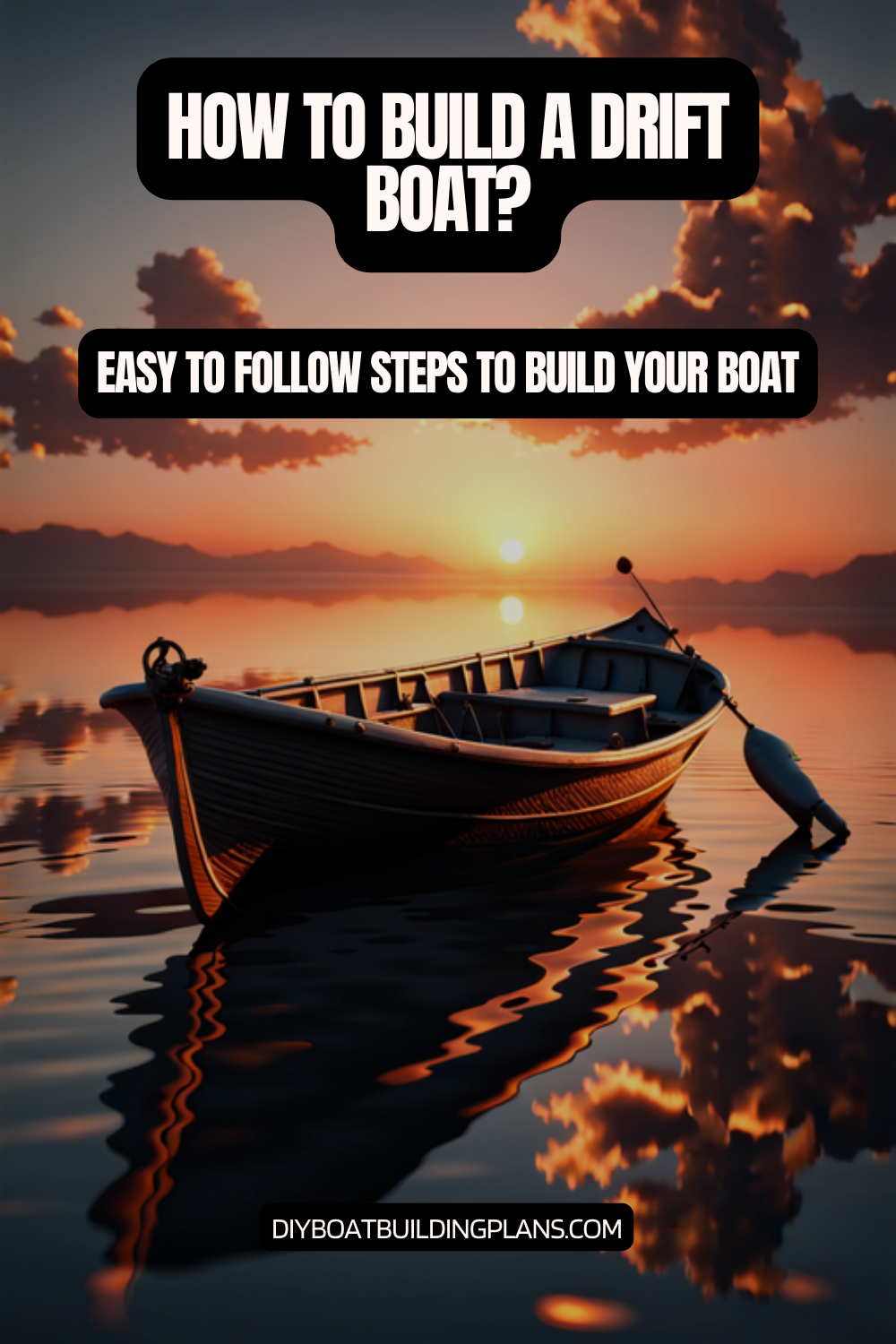
Maintenance Tips for Longevity
Keeping your drift boat in top shape needs regular care. Start with inspections and fix problems early. After each trip, check the hull, chines, and any damage from rocks or launching.
Storing your boat right can make it last longer. Clean it well after each use to avoid damage. Store it in a place that’s shaded, not too hot or cold, and safe from impacts. A good cover or storage area is best.
Winterizing your boat is key to keeping it in good condition. Before winter, check your boat thoroughly. Remove gear, dry it out, and apply a protective coat to stop moisture damage. Use marine-grade products like Wetlander to protect your boat’s most sensitive spots.
Regular upkeep doesn’t just keep your boat safe. It also makes your river trips more fun and lasts longer. Spend time on maintenance, and your drift boat will perform well and cost less to fix over time.
FAQ – How To Build a Drift Boat
How long does it take to build a drift boat at home?
Building a drift boat at home can take several months to a year. This depends on your time, skills, and resources. It requires careful planning, dedication, and attention to detail.
What are the essential tools needed for building a drift boat?
You’ll need a drill, belt sander, compound miter saw, jigsaw, and circular saw. Clamps and hand tools are also key. A router and table saw can be helpful but not necessary.
What materials are typically used in drift boat construction?
You’ll use marine-grade plywood, epoxy resin, fiberglass, and hardware. The bottom uses thicker plywood (up to 1/2 inch). Sides are thinner (around 1/8 inch).
What workspace is ideal for building a drift boat?
You need a spacious, well-ventilated garage or workshop. It should have good lighting, power sources, and temperatures above 60 degrees Fahrenheit. This is for proper epoxy curing.
How do I ensure the drift boat is stable and balanced?
Focus on symmetry, proper weight distribution, and seat placement. Use the “stitch and glue” technique for framing. Consider seat and passenger positions carefully.
What safety precautions should I take while building a drift boat?
Work in a well-ventilated area when using resins and fiberglass. Wear protective gear like respirators and eye protection. Keep your workspace clean and well-lit. Take your time and avoid rushing.
How do I test my newly built drift boat?
Start testing in calm, shallow water. Check for leaks, stability, and handling. Observe how it performs with different loads. Be ready to make adjustments as needed.
What maintenance is required for a homemade drift boat?
Regularly inspect for damage and repair small issues. Reapply protective coatings as needed. Store the boat clean, dry, and protected from the elements.
Can I customize my drift boat design?
Yes! DIY drift boat building lets you customize a lot. You can change seating, add storage, and even choose custom paint or wood finishes.
Where can I source materials for my drift boat project?
You can find materials at local hardware stores, marine supply shops, and online. Look for marine-grade materials. If unsure, consult with experts.
